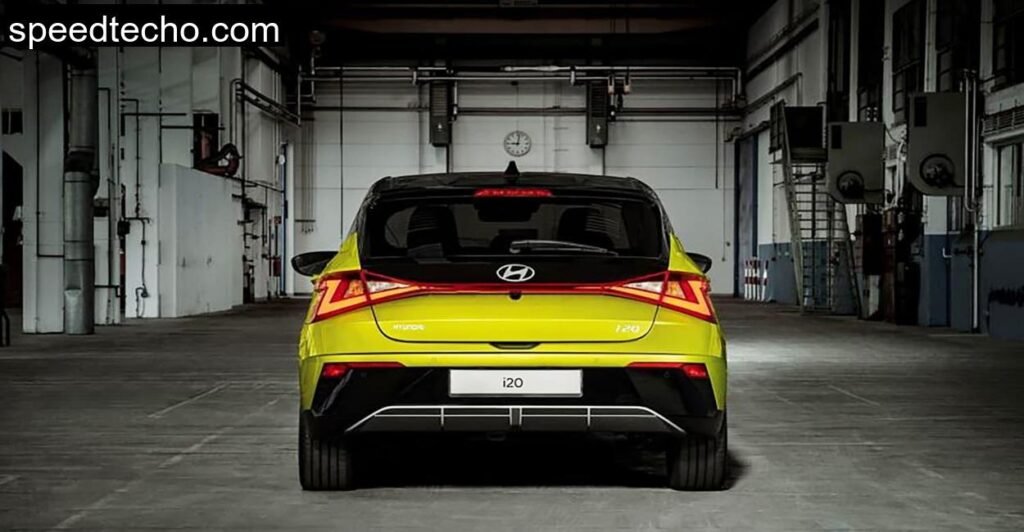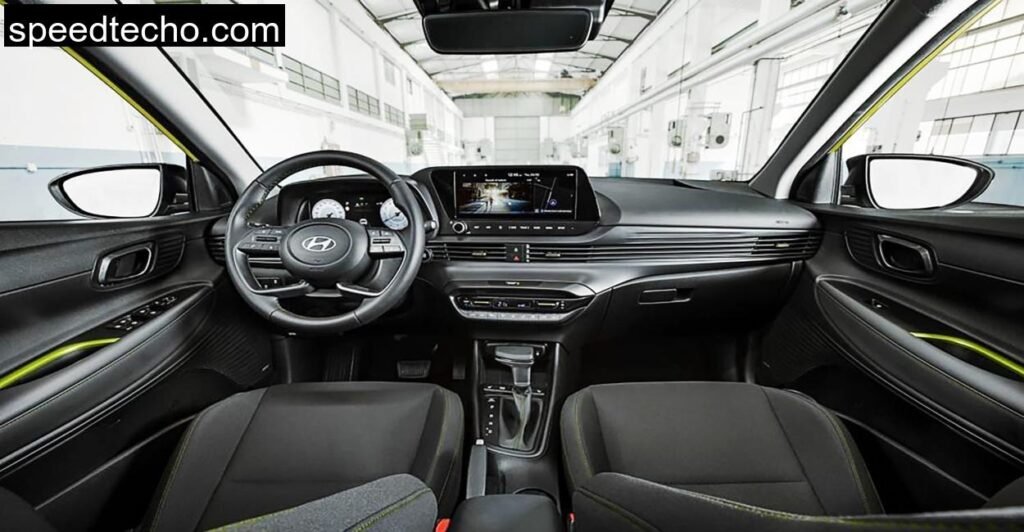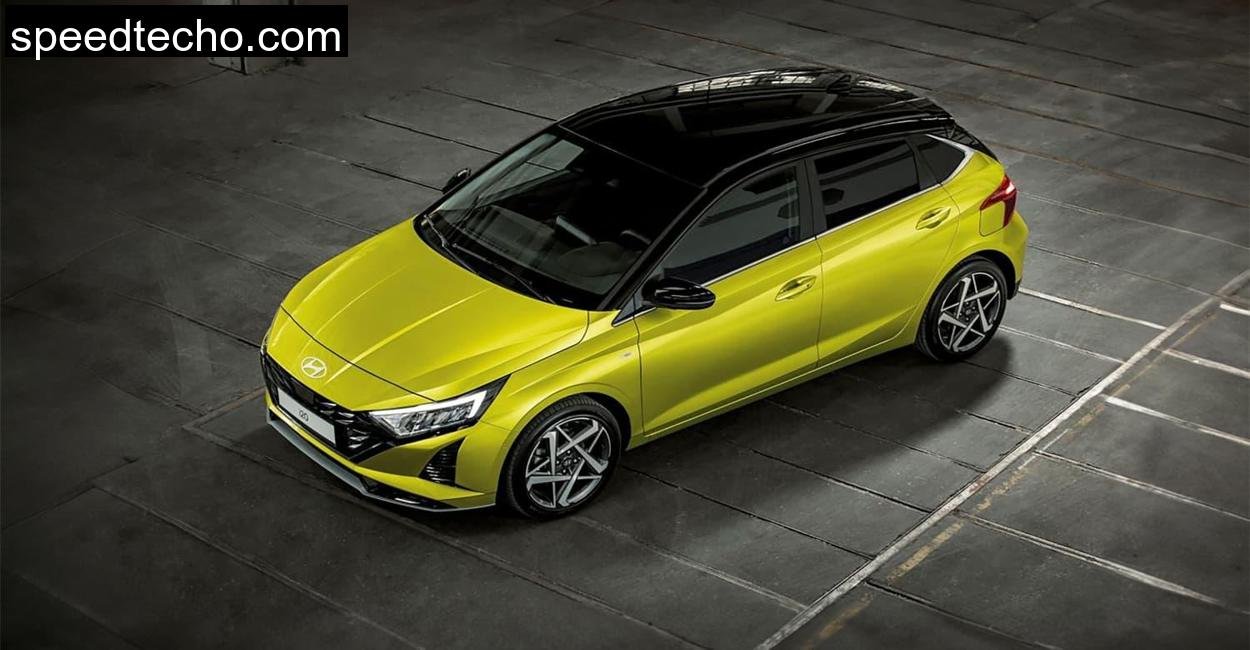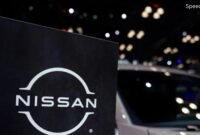
A Design That’s Not Afraid of Simplicity
First, let’s talk about looks. Because in the world of small cars, where most are built to a price, the i20 still manages to look rather sharp. The new front end with its more tapered grille and repositioned Hyundai badge makes it look a bit more focused, and from the rear, that LED light bar that wraps into the fuel cap still turns heads. My test car, finished in “Lucid Lime Metallic,” caught reflections off the hilltop trees as if it were a larger, more premium car.
At 4.06 meters long and just 1.45 meters tall, it slots squarely into the subcompact segment. Yet it doesn’t feel compromised in space , at least not in the front. I’m 1.87 meters tall, and with the seat dropped low, I still had ample headroom and knee clearance. Rear seat space? Adequate for two adults under 1.80m, but it gets cozy fast.
Outward visibility from the front is fine, but those chunky C, pillars? They’re a menace when backing out in tight spaces. Good thing the rearview camera in the Trend trim is sharp and accurate , because you’re going to rely on it often.
Infotainment and Cabin: Usable but Getting Old
Slide inside, and the i20 greets you with a cabin that’s pragmatic more than plush. The 8, inch central touchscreen sits high on the dash, paired with a 10.25, inch digital cluster in front of the driver. It all looks fine at first glance, but when you start tapping and swiping , especially on a bright day , you notice the lag. The screen feels distant, icons are small, and Hyundai’s UI design hasn’t aged well. Menu texts are long and not always intuitive.
Apple CarPlay and Android Auto are thankfully standard, and wireless charging worked flawlessly with my Pixel 7. But don’t expect rich ambient lighting, soft, touch materials, or a panoramic roof here. This is economy with a Hyundai badge , logical and well put together, but still conservative.
What I did appreciate was the physical climate controls. After days of battling touch, sensitive nonsense in pricier cars, the i20’s tactile buttons were a blessing, especially on the twisty roads of Limpurg where I didn’t want to dive into menus just to tweak fan speed.
On the Road: Light on Its Feet, But Not a Sprinter
Now, onto the stuff that matters , driving. The 1.0, liter T, GDI three, cylinder turbo, churning out 100 hp and 172 Nm of torque, is not quick. Let’s be honest. It gets from 0 to 100 km/h in a leisurely 11.1 seconds. But what it lacks in urgency, it makes up for in smoothness and efficiency.
Climbing out of Sulzbach, Laufen, throttle response was adequate, especially with the revs kept above 2,000 rpm. Below that, the turbo lag becomes noticeable, especially in second gear when trying to pull out of tight switchbacks. But once the turbo’s awake, the car moves with a cheerful energy.
The six, speed manual is a joy. It has a short throw, light clutch, and precise gating. There’s something old, school gratifying about rowing your own gears through a series of tight corners. Even during spirited runs toward the Jagst valley, the gearbox never faltered. I never once missed a downshift or had to fight a notchy gate.
Ride quality was another surprise. Despite sitting on 16, inch wheels, the suspension felt supple over cracked pavement and road scars. There’s body roll in corners, of course , it’s a small hatchback with a modest center of gravity , but nothing unpredictable. It held its line through Limpurg’s tightest bends with admirable stability.
One downside? The engine’s acoustic. That three, cylinder buzz is fine in short bursts, but it becomes a bit tiresome on the Autobahn. At 130 km/h, it hovers around 3,000 rpm, humming away audibly inside the cabin.
Fuel Use, Emissions and Daily Use
Over 367 kilometers of mixed driving , mountain roads, some city, a short Autobahn stretch , I averaged 5.5 liters per 100 km. Hyundai claims 5.2 l/100 km WLTP, so this was close enough, especially considering I didn’t baby the throttle.
Emissions compliance is solid, with 119 g/km CO2, but what impressed me most was the regenerative coasting. This variant didn’t come with the 48V mild hybrid system, yet it still felt like Hyundai had done enough on the software side to enable smooth deceleration without harsh engine braking.
Trunk space is also generous for the class: 352 liters with the rear seats up, expanding to over 1,100 liters when folded. I managed to fit a road bike (front wheel off) and gear for a weekend ride across the Limpurg Ridge. Not bad for a hatchback of this size.
The Unforgivable Flaw: Assistance Systems Gone Wrong
Here’s where the Hyundai i20 goes from “small, car perfectionist” to “why did they do this?”
The speed assistance system. Required by EU law from July 2024, the ISA in the i20 is absurdly oversensitive. It shrieks if you’re doing 53 in a 50 zone. Worse, there’s no user, configurable buffer or tolerance. You can disable it , but then it deactivates the traffic sign recognition too.
Imagine: you’re driving in an unfamiliar town, want to stay alert to limits, but also don’t want to be scolded constantly. Tough luck. It’s either full beeping chaos or total silence. In a car this smartly designed elsewhere, this one misstep borders on infuriating.
Hyundai, please patch this with a firmware update. Let us set a buffer. Let us mute the beeps without killing the visual display. The hardware is fine. The implementation isn’t.

Final Thoughts: So Close to Perfection It Hurts
The Hyundai i20 remains a compelling small car , even in 2024. It’s light on its feet, efficient, roomy for the class, and impressively built. The design is tasteful, the manual gearbox is a rare delight, and it handles daily duties with charm. I’d choose it over a base Polo or even a Renault Clio in a heartbeat.
But Hyundai’s flawed execution of the speed assist system really drags down the user experience. In a car that does nearly everything right, it’s the digital nanny that turns an otherwise delightful drive into an annoying one. For most, it won’t be a dealbreaker. For enthusiasts and attentive drivers, it might.
Still, if you’re looking for a practical, decently equipped small hatch with real, world usability and personality, the i20 deserves a spot at the top of your list.
Is the Hyundai i20 good for highway driving?
Yes, it handles well at speed and remains composed. However, engine noise is noticeable at 130 km/h and above, especially in the manual version.
Does the i20 have adaptive cruise control?
Not in the tested Trend trim. It has regular cruise control with a limiter, but no radar, based adaptive system.
How is the i20’s suspension with bikes and gear loaded?
It handles the load confidently. The suspension remains composed even with two bikes inside and one on the roof, plus passengers and luggage.






